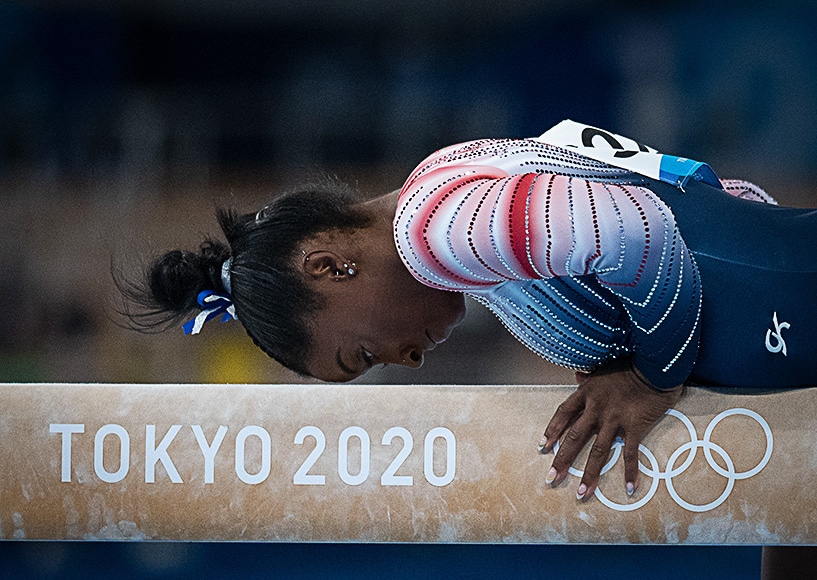Nick Didlick










As I prepare to fly to my 15th Olympic Games 2022 Winter in Beijing, I have had time to reflect on the changes from my first games in Sarajevo (then Yugoslavia) 1984 to now. Over those 38 years and 15 Olympic Games, so much has changed, including the transition to all digital beginning with the 1996 Games in Atlanta.
Early in 2017, I made a second big jump in technology in my career (the first was switching to all digital photography) and switched to Sony mirrorless a9 cameras. Sony has been relentless in developing its cameras and lenses in the past five years, making smaller, lighter, and faster professional cameras.
Today my Sony cameras can shoot 50-megapixel digital images at thirty frames per second, all while autofocus tracking a subject’s eye. I jokingly tell people the Sony mirrorless cameras have extended my professional career. I can let Sony look after the complex technical tasks of photography, leaving me to concentrate on the creative aspects.
But covering an Olympics has always been a blend of travel, technology, and logistic hurdles to be overcome.
Beyond the cameras and lenses, I will carry to these games, one of the significant changes we deal with is Covid-19 and the complexities it brings – including storytelling and visual complexities.
The Beijing Olympics will be held without fans, as was the 2021 Summer Olympics in Tokyo. The silent stadiums make it difficult for the athletes to compete without the cheers of fans; it’s also tricky for photographers who search for exciting backgrounds in empty stadiums.
Here is my gear list for covering the Beijing 2022 Olympic Winter Games. This includes a collection of bodies and fast lenses of varying focal lengths for both handheld and remote cameras.
Cameras:
5 x Sony Alpha 1 camera bodies (two used as remote cameras))
2 x Sony a9ii camera bodies (used as remote cameras)
Lenses:
1 x Sony 12-24mm f/2.8
1 x Sony 14mm f/1.8
1 x Sony 24mm f/1.4
1 x Sony 35mm f/1.4
2 x Sony 24-70mm f/2.8 (one used on remote cameras)
1 x Sony 50mm f/1.2
2 x Sony 135mm f/1.8 (one used on remote cameras)
2 x Sony 70-200 f/2.8 MKII (one used on remote cameras)
2 x Sony 100-400mm f/4.5-5.6 (one used on remote cameras)
1 x Sony 400mm f/2.8
1 x Sony 600mm f/4
1 x 50mm Tilt-Shift Lens
2 x Sony 14TC
2 x Sony 20TC
nickdidlick.com | @nickdidlick
2018

Nick Didlick
I love photography. With each assignment, from my first paid photo assignment forty-two years ago to my latest photo shoot last week, I have to pinch myself as I realize I have the same passion for my chosen career today as I did on my first day. In fact, I think the camera picked me for this career, and I went just went along for the ride.
While photography has seen many changes in technology and business practices, I still get that little warm and fuzzy feeling looking through my viewfinder and capturing images.
I have been very fortunate to have covered many Editorial, Sports and Commercial assignments over the years. I’ve seen many of the world’s events unfold as they happen before me, through my viewfinder.
Today, from my base in Vancouver, Canada, I shoot Editorial, Commercial and Video assignments and look forward to every challenge, whether it’s across the street or on the other side of the world.
I love technology and always look for new ways to employ the latest in visual capture devices to create engaging imagery. I switched to all-digital photography in August of 1994 while working in newspapers, and loved every challenge of being an early adopter. I started shooting video for clients in 2004 and switched to shooting video with a DSLR in 2008. I enjoyed the freedom of using the same camera to do two jobs.
Early in 2017, I made a second big jump in technology to all mirrorless cameras for still and video assignments. After forty-one years of shooting a top-name brand SLR/DSLR camera, I completely retooled and switched to Sony a9 and aR7 III
cameras. I describe this switch to people as just like when I ditched my film SLRs for DSLR’s twenty-four years ago: It’s evolutionary in photography terms.
The Sony a9 brings with it ground-breaking eye tracking AF technology, plus, it can shoot entirely silently even at 20fps. I look forward to providing to my clients the fresh look at sports and photojournalism photography that this camera delivers.
[See Shotkit’s Sony a9 review and Sony a7R III review]
Gear Bag
When I start to look at my gear closet for this article – it’s more than just a bag or multiple bags of equipment – I feel like I have GAS (Gear Acquisition Syndrome)! But the gear I use varies widely from a simple a9 and a couple of lenses to an Olympic assortment. Here is my gear list for covering the PyeongChang 2018 XXIII Olympic Winter Games.
Sony Cyber-shot DSC-RX1R II
4x Sony A9 + Sony VG-C3EM Vertical Grip
Sony A7R III + Sony VG-C3EM Vertical Grip
Sony FE 12-24mm f/4 G
Sony FE 16-35mm f/2.8 GM
2x Sony 24-70mm f/2.8 GM
Sony FE 28mm f/2
Sony FE 35mm f/1.4 ZA
Sony FE 50mm f/1.4 ZA
Sony FE 85mm f/1.4 GM
2x Sony 70-200mm f/2.8 GM OSS
Sony FE 100-400mm f/4.5-5.6 GM OSS
Sony Fisheye Converter
2x Sony Tele Converter 1.4x
Sony Tele Converter 2x
2x Sony F60M External Flash for Multi-Interface Shoe
2x Sony FA-WRR1 Wireless Radio Receiver
Sony FA-WRC1M Wireless Radio Commander
Sigma Mount Converter MC-11 (Canon)
Rylo 360 Camera
Theta 360 Camera
Plus, mounts, grips and much more.


Check out these 8 essential tools to help you succeed as a professional photographer.
Includes limited-time discounts.













